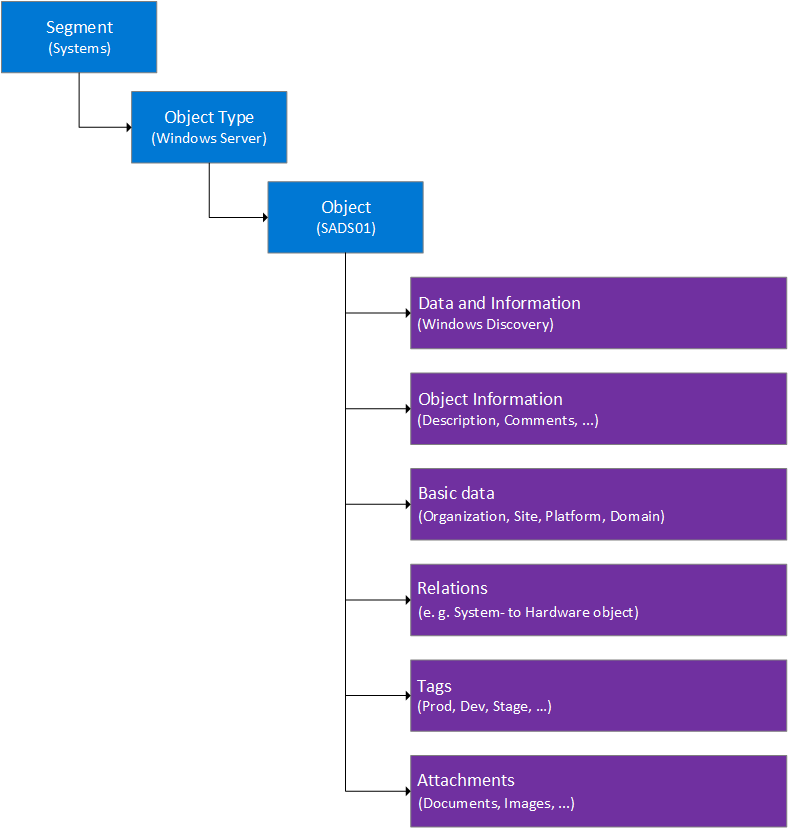Docusnap365 Terminology
2 minute read
Introduction
A uniform and logical structuring of the information contributes significantly to the understanding and the associated possibilities. The organization of information, especially in the “Inventory” and “Business” segments, always follows the same scheme. For example, objects in the “Hardware” segment can be linked to objects in the “System” or “Business” segment.
The following graphic shows the basic structure from the segment to the object type to the object with all its further information and supplement options. This will be discussed in more detail in the following sections.

Segments
Segments are the basis for the logical structuring of IT documentation. Whether a single server, an operating system, a network or a cloud service - each element can be clearly assigned to a segment. This creates transparency and is essential for the structure of IT documentation. The segments defined in Docusnap365 are based on the independent documentation model we developed. Classification and assignment of objects to the corresponding segments are performed by the discovery modules. It is also possible to create objects manually in the respective segment.
The “Inventory” area contains the following segments:
- Hardware
- Systems
- Networks
- Services
- Management Services
- Identity Providers
- Accounts
- Software
- Data
- Passive Infrastructure
- Integrations
For example, Windows systems discovery captures hardware information in addition to operating system information. In this case, the operating system information is assigned as an object to the “Systems” segment, and a connected monitor is assigned as an object to the “Hardware” segment.
The situation is similar in the “Business” area, which includes the following segments:
- Information
- People
- Business Services
- Applications
- Processes
- Departments
Object types
Object types are used in Docusnap365 to classify objects that share common characteristics and properties. All object types are derived from a base object type so that basic properties, such as site, platform, and organization, can be specified. In addition, functionality such as assigning tags or creating dependencies is provided for the base object type.
A separate specification is created for each object type so that the required information can be recorded in a structured manner. For example, the object types in the “Systems” segment do not use a generic type “System”, but specific object types for Windows servers, Windows workstations, VMware ESXi and many more.
Objects
An object is a concrete copy of an object type with its own identity. For example, in Windows discovery, either a Windows Server object or a Windows Workstation is created for each Windows system and assigned to the Systems segment.